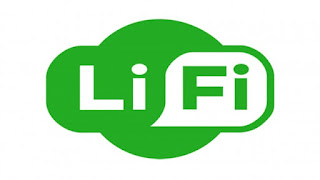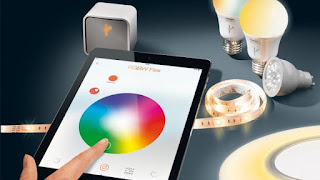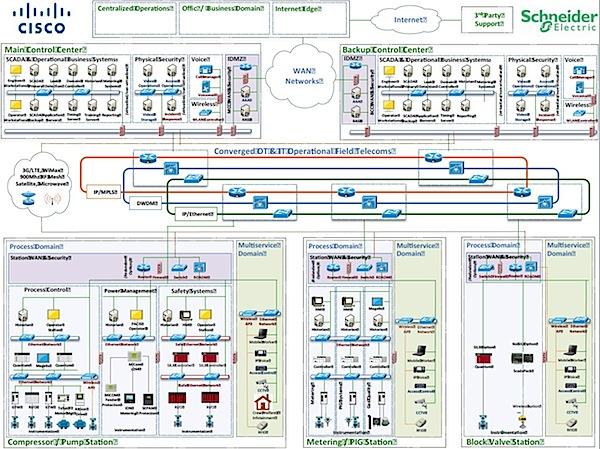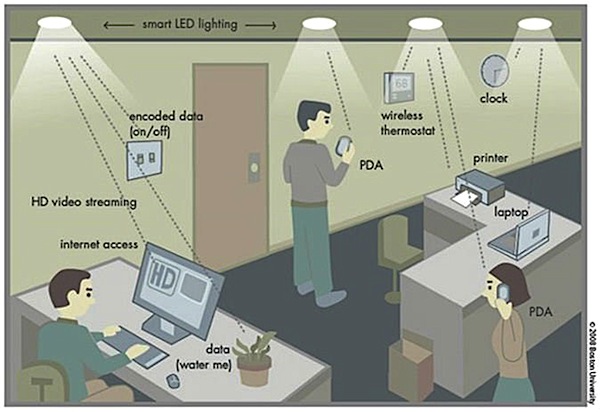TAG | lifi
| In France’s Carrefour supermarket, visible light communication is used to transmit information to visitor’s smartphones. |
The development is the latest leap forward in the up-hill gallop that is the progression of Li-Fi, and is a move that will no-doubt raise the profile of the new technology, by rolling it out onto a bigger stage.
The first live demonstration of Li-Fi in front of an audience was given just a few weeks ago at LuxLive in London.
Recently though, the technology’s forward momentum seems to have slowed down a little, with limited pilot implementations and demos from vendors such as Scotland’s pureLi-Fi and others, being the only evidence of implementation of the technology in the field.
The news from Philips is likely to reverse this trend and the company looks set to invest in the technology in a push toward commercialising it.
The lighting giant is planning to leap into the new and, potentially, lucrative Li-Fi market, by purchasing Luciom, a small French company, which specialises in visible light communication (VLC).
‘Philips Lighting acquired Luciom at the end of 2016,’ a Philips spokesperson confirmed to Lux’s sister publication, LEDs Magazine, noting that all eight of Luciom’s employees now work for Philips.
Luciom is developing several technologies related to VLC, including Li-Fi. Philips appears to be particularly interested in Luciom’s potential to improve Li-Fi in several ways, including speed, coding, decoding and reliability.
Once Li-Fi spreads as a technology, it is hoped that it can become another means of wireless internet transmission, assisting and complementing Wi-Fi, by opening much more frequency to internet use.
Wi-Fi with its radio frequencies is more limited than the considerably wider spectrum of LED lightwaves on which Li-Fi data rides.
Luciom is best known for a ‘tagging’ scheme, which individual LED lights use to uniquely identify themselves in one-way indoor-positioning systems. Compared to two-way Li-Fi, indoor-positioning is a more basic form of VLC that sends small amounts of information from a light to a phone or other gadget.
A number of retailers are experimenting with one-way VLC to try to engage shoppers in stores with information and direct them to promotions. Philips has had a trial with a Carrefour store in France and with the Dubai-based retail chain aswaaq. In the US, Target is trialing the technology, although it has never revealed its supplier, as Lux Review reported last year.
Philips is believed to have acquired Luciom for less than €10 million. LEDs Magazine understands that at one point Philips might have raised patent infringement queries related to Luciom, which could have factored into the price of the purchase.
‘The terms of the acquisition were not disclosed,’ the Philips spokesperson said via email, in response to questions about any patent implications.
bidirection li-fi · lifi · lifi led · light control · luciom · Novel Energy Lighting · philips li-fi · smart buildings · visible light communication · wifi lighting
Scientist who discovered human centric lighting shares tips with Lux. PLUS: Lighting based indoor positioning set to revolutionise US stores. AND: Health fears makes city think twice about LED. Lux Today 24 January 2017
human centric lighting · led office lighting · led panels · led tubes · lifi · light positioning · Novel Energy Lighting
Smart traffic lights to ‘communicate’ with drivers to inform them when they are about to change. PLUS: Saudi scientists create ‘fastest li-fi luminaire’. AND: New building standard aims to protect the health of occupants.
intelligent cities · led lighting · led street lights · lifi · lifi traffic lights · Novel Energy Lighting · smart street lights · smart traffic lighting
Amazon granted patent to develop drone docking stations that sit on street lights. PLUS: Poor lighting prompts concern before opening of Rio Olympics. AND: Top US basketball team announces li-fi first for new stadium. Lux Today August 2nd 2016.
amazon drone · led lighting · li-fi · lifi · lux review · Novel Energy Lighting · rio lighting · stadium lighting
Scottish start-up creates first ever Li-fi office in Paris. PLUS The German rail network installs one million luminaires to cut energy use by 25 percent. AND The American Medical Association warns that outdoor LEDs may damage health. Lux Today 28 June 2016.
bidirection li-fi · led lighting · li-fi · lifi · Novel Energy Lighting · office led · office li-fi · office lighting
23
Paris edges closer to Li-Fi revolution
Comments off · Posted by admin in LED, LED Floodlights, LED Spots
led bridge lighting · led lighting · li-fi · lifi · Novel Energy Lighting · paris lifi · paris metro
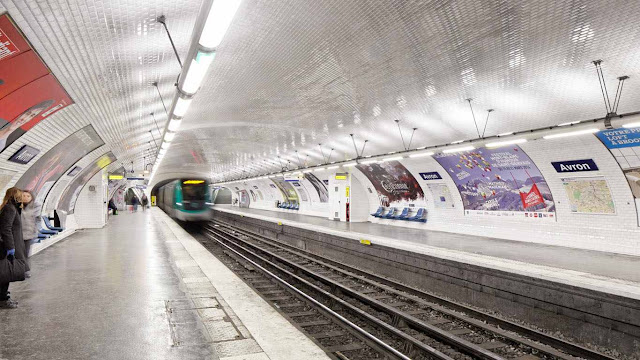
Continued testing on LiFi capabilities are in train prior to a long-anticipated roll-out of the system in Paris Metro stations.
A French firm has won the contract to supply internet-over-lighting technology on the Paris Metro.
The ambitious project – which will allow over two million daily commuters to use lights as a form of Wi-fi, dubbed ‘Li-fi’ – now looks firmly on track. Already La Defense station has been successfully equipped with the tech.
Paris-based Oledcomm, a spin-off of the University of Versailles, won the contract from RAPT to initially supply Li-fi installations in 66 stations across Paris, involving over 250,000 LED luminaires.
The award of the contract by RATP follows an extensive series of test phases before the roll-out goes ahead. The first phase of the work involved a series of evaluations to prove the concept. This work was done in a so-called Fab Lab environment, community-based workshops where entrepreneurs, students, small businesses come together to develop technology.
The system needed to demonstrate that it could deliver on its core promises of a Li-fi installation, especially on four key criteria:
- The Li-fi can operate within a complex physical environment
- The system can provide the bi-directional communications needed for a secure internet connection
- Traffic and security information can be ‘pushed’ to smart phones as necessary
- A system of audio-messaging could be developed to enable tourists and people with impaired sight to be guided around the tunnels and concourses of an underground station
The Fab Lab process also presented commercial opportunities to other entrepreneurial groups to use the open-source nature of the system to develop apps that could work alongside the core Li-fi service.
Having successfully completed the test-house phase, the next phase of the contract moved into the real world with an installation of Li-fi-enabled LED luminaires at the Metro station at La Defense.
Chosen for its complexity, La Defense provides all of the real-life difficulties that a Li-fi installation will need to overcome if it’s to prove its worth to the transport system operators.
Once all of the testing has been successfully completed and RATP is confident of the platform, it’s expected that Paris will become the first public transportation system in world with Li-fi connectivity.
Oledcomm, formed in in 2005, installed its first public Li-fi project at the Musee Curtius in Liege in 2012. Since then, the company has gone on to install systems in offices, hospitals, retail stores as well as public street lighting.
Li-fi works by making invisible modulations to the light from a luminaire – invisible to the human eye, but not to the camera on a smartphone, tablet or laptop. The same technology lies behind the positioning systems being used by retailers such as Carrefour and Target, but here it is being used to send data, rather than just to pinpoint someone’s position. Proponents of Li-fi say that it will add enormous capacity to wireless communications, because the visible light spectrum is 10,000 times larger than the radio frequency spectrum that Wi-fi uses. Some also note that it will operate much faster than Wi-fi, and that it will be useful in electromagnetic sensitive areas like hospital, airplanes and nuclear power plants.
It’s currently not clear how devices will communicate back to the lighting on the Paris Metro installation. However, it is relatively straightforward to use different wavelengths for each link direction, i.e., visible light in the downlink (to also serve as illumination) and infrared or even standard Wi-fi in the uplink.
On the downside, Li-Fi signals do not travel as far as Wi-Fi signals do.
led light communications · led lighting · led subway · li-fi · lifi · metro lighting · Novel Energy Lighting · railway lighting · station lifi · station lighting
Lux reports: A tech revolution is happening in lighting – and the speed of development is blistering. Here we identify the biggest trends you need to know about. And a few are rather surprising….
 1 Indoor location tracking
1 Indoor location tracking
The latest tech uses lights in conjunction with smart phones to accurately locate people with 10cm accuracy within an indoor space. Once the building owner knows where you are, they can interact with you to deliver real time marketing messages or offer better services, or perhaps they’ll just track what you do and figure out how to use the data.
Who to watch: Acuity Brands, Philips
 2 Camera-based lighting control
2 Camera-based lighting control
Lighting controls today typically use infrared, ultrasonic or microwave sensors to detect movement, which means they are liable to false triggering or switching prematurely when people aren’t moving. Camera technology is so cheap (you probably have two in your smart phone) that they are now being used in lighting control.
Who to watch: EWO, Zumtobel, Steinel, Hubbell
 3 Self-learning control systems
3 Self-learning control systems
The concept of a device learning its own settings has been pioneered by Google’s acclaimed Nest Labs in its thermostats. The concept lends itself perfectly to lighting controls so that sector is examining how the approach can be adopted to enable the system to self-commission and learn how a space is being used over time.
Who to watch: Helvar
 4 Super capacitors
4 Super capacitors
The Achilles’ heel of emergency lighting is batteries, which degrade over time. However, the improvements in efficiency of LEDs and advancing capacitor technology mean it is possible to get an hour of lighting back-up without batteries. This means that emergency lighting can have a maintenance free life of up to 10 years.
Who to watch: Teknoware, Ledo
 5 Integrated street lights
5 Integrated street lights
Street lights or rather the columns which hold them off the ground used to be a convenient place for dogs to use as toilets, now they’re being crammed full or other technology from CCTV systems, PA speakers, Wifi transmitters and electric car charging points. This reduces street clutter and could provide funding streams for public lighting.
Who to watch: Schreder, Hess, Philips
 6 Inductive power coupling
6 Inductive power coupling
Although this technology has been around for years – it’s used to charge your electric toothbrush – manufacturers are now exploring ways in which it can used for lighting. It’s a perfect way to install an unground uplight and avoid the age old issue of water ingress, or connect a retail lighting display to power without wires.
Who to watch: Auraled, Design LED Products
 7 DC power networks
7 DC power networks
The battle of the currents was settled in favour of AC back in the 1890s, but LEDs and a proliferation of low-power devices mean Round Two has started. Power over Ethernet (PoE) is one embodiment bundled up as part of a computer network, but we’ve also seen DC-powered track lighting, which results in smaller fixtures.
Who to watch: Cisco, Zumtobel
 8 Lights which aren’t just lights
8 Lights which aren’t just lights
With sensors becoming so cheap, and lights getting connected to the Internet, light fixtures are starting to get packed out with sensors not related to lighting, such as ambient temperature and air quality. That data can be shared with other building services or harvested for other big data applications.
Who to watch: Gooee, Sensity Systems, Acuity Brands
 9 Miniaturisation
9 Miniaturisation
Everything in lighting is starting to shrink dramatically. Think chip-scale LED arrays, compact optical systems and ultra thin LED drivers (the smallest we’ve seen is just 13mm high). This should result in ultra-small downlights, in-ground uprights and super-slim linear fixtures, and lower materials costs for the manufacturer.
Who to watch: Lumileds, Samsung, Osram, iGuzzini
 10 Li-Fi
10 Li-Fi
Wi-fi over lighting, or Li-Fi to give it the name coined by inventor Harold Haas, can transmit data 100 times faster than wifi by modulating the light, which would mean you could download the entire set of Star Wars movies in around one second. It works by pulsing the LED light at extremely high frequencies which is undetectable to the human eye.
Who to watch: PureLifi, Toshiba
dc power networks · google nest · indoor location tracking · inductive power coupling · integrated street lights · lifi · lighting trends · Novel Energy Lighting · super capacitors · wifi lighting
A looming skills shortage could derail the revolution in connected lighting – unless action is taken to train a generation of contractors. PLUS: Customer who spent $150 million on lighting says pace of technological development is ‘overwhelming’. Lux Today webcast for May 17 2016 with Courtney Ferguson.
connected lighting · gooee · led lighting · lifi · lighting skills · lux lighting · Novel Energy Lighting
17
The Brave New World Of The Internet Of Things – The Technologies And Issues
Comments off · Posted by admin in Infographics, LED, Philips LED
The IoT, in which every device can communicate with every other device – even a smart bedcover can ‘talk’ with devices such as Philips’ Hue LED lighting system – is fast becoming a fact of life, like it or not. But how are the IoT technologies evolving, what are the benefits and how about the risks? And how about a wider context? James Hunt explains:

Mario Morales, IDC
The IoT is as of countless ‘things’ that are fitted with uniquely identifiable embedded devices that are wirelessly connected to the Net. These ‘nodes’, as the ‘things’ are called, can send or receive information without human intervention. The nodes can even be fitted to animals (to track or find them), and indeed to people and their clothes – for a variety of reasons we may or may not like.

To achieve this, every ‘thing’ – which could be an LED light source or luminaire, or thermostat, or an industrial controller, for example – must be uniquely identifiable through its embedded computing system, yet it must also be able to interoperate within the existing Internet infrastructure. Such devices are proliferating fast.
With its myriad such devices, including sensors and actuators that ‘talk’ to each other wirelessly and on the Internet, the IoT brings with it an astonishing ability to measure, monitor, and analyse data. This includes, for example, consumer behaviours and buying habits – and not just consumers either, as all businesses can benefit.
Such monitoring and analyses can be used to determine future product developments that will revolutionise the ways in which we live and do business. For the vast majority of homes – made ‘smart’ by IoT devices – everyday life will be enhanced by technology, particularly in terms of entertainment and comfort.
To take just one example – Google and Philips Lighting have got together for Nest Lab’s intelligent wireless thermostat and home automation devices to work with Philips’ Hue IP-connected LED lamps – OSRAM is in on the act too.
Connectivity is the word
When the IoT is augmented with devices such as sensors and actuators, it can then encompass increasingly important technologies such as smart homes, buildings, grids and cities, as well as intelligent transportation. These devices collect useful data with the help of various existing technologies and then autonomously flow the data between other devices – such as those that use Wi-Fi for remote monitoring. But how, in brief, does such connectivity work?
Firstly, there are several types of connectivity used by the IoT. These are:
* Personal Area Networks (PAN)
* Local Area Networks (LAN)
* Neighbourhood Area Networks (NAN)
* Wide Area Networks (WAN).
PANs and LANs are those that most domestic and small business IoT installations are likely to use directly and these are also the ones that the majority of electrical contractors and installers will be involved with.
Those IoT devices that use a PAN with a smartphone will use the smartphone as the gateway to the Internet (WAN). Devices in a smart home or automated building can connect to a LAN and find their way to the Internet too.
So IoT devices use, as the name implies, Internet connectivity, but smart devices that are part of an overall IoT can also use other enabling technologies, such as RFID and near-field communication (NFC), optical tags and quick response codes (a now common example is the QR Code) and a whole range of wireless (Wi-Fi) topologies. The latter include Bluetooth Low Energy, low energy wireless IP networks, ZigBee, Z-Wave, LTE-Advanced (high-speed communication specification for mobile networks) and Wi-Fi Direct (Wi-Fi for peer-to-peer communication without needing to have an access point (AP).
It remains to be seen if any one of these becomes pre-eminent.
Important IoT issues
Away from IoT issues that will affect electrical wholesalers, contractors and installers directly – as opposed to regulators, data centre developers and owners, specifiers and IoT / network device manufacturers – there are a number of problems that will need to be addressed to ensure successful wide-scale take-up.
For example, thousands of IoT devices signaling and sending data to each another take both CPU consumption and a surprising amount of energy. This costs money and has carbon emission implications, so IoT devices should use the minimum energy possible. Though this will not normally affect electrical distributors, contractors and installers, ultra-low-power wireless chipsets should be used in IoT devices and low power networks – such as Bluetooth low-energy, ANT, ANT+, ZigBee, ZigBee RF4CE, Wi-Fi, Nike+, IrDA and the near-field communications (NFC) standard.
Bandwidth take-up is another IoT connectivity issue. Bandwidth on a cellular (mobile) network is expensive, especially with hundreds of thousands of IoT devices sending request/response signals to a server – the result is that the server farm will need to be large enough to handle all the data. With the potential for many billions of devices (possibly even trillions longer term), this will be a huge problem that must be addressed.
Another issue is presence detection of IoT devices. This provides the exact state of all IoT devices on a network and shows immediately when any device drops off the network – or when it comes back on. In this way, the IoT devices can be monitored (and fixed if a problem occurs).
And for those IoT devices that ‘live on their own’ – such as trackers – the connectivity to the wider Internet can be tricky.
Finally, it is important to note that the Internet is not simply one network, and heterogenous networks, proxy servers and security firewalls can all disrupt connectivity. So a fully functioning, all-encompassing IoT is not with us yet as many issues need to be sorted. Even so, the vast majority of Voltimum users will not need to confuse themselves with this level of granularity – most already available smart devices they install for domestic use as part of the IoT will be simple to install and commission. They are already.
At light speed!
Although Wi-Fi has not been in the public domain for too many years – apart from computer routers – it is now an established means of data communication. It is fast and increasingly reliable. Importantly, it is quick and easy to install because expensive and disruptive hard wiring is not needed.
However, there’s a new kid on the block that is even faster – far faster – and it has its own set of advantage and disadvantages. Let’s look at it briefly here:
This important newcomer is Li-Fi, which has as its analogue Wi-Fi, but being based upon light (which travels at 186,000 miles/s) is very much faster – many times faster than conventional Wi-Fi – and possibly up to 10 times cheaper.
Li-Fi (or Light Fidelity) is a form of visible light communication (it can also use infrared and near ultraviolet). It is bidirectional and fully networked and has been described as a ‘new era of wireless connections’. With claimed speeds of up to 224 GBps (though mostly lower), this new technology could enable a high-definition film to be downloaded in seconds.
The change to Li-Fi, when it comes, will be driven mainly by the electrical and lighting sectors through LED lighting. Li-Fi will turn every LED lamp into wireless access points (APs), which effectively allows any user to move between sources without losing the connection. The LED lamps act as the medium to deliver networked, mobile, high-speed communication in a similar manner to Wi-Fi (but much faster). All this then becomes another enabler and part of the IoT.
Li-Fi has the advantage of being suitable for use in areas sensitive to electromagnetic waves such as aircraft cabins, hospitals and nuclear power plants, because it does not cause electromagnetic interference. However, the light waves cannot penetrate walls, so reducing Li-Fi’s scope, and there may be problems in bright sunlight. Such difficulties will have to be addressed before there is widespread use of Li-Fi, but there’s no doubt that this new technology is creating great excitement.
Already there are examples of Li-Fi in the market. For instance, Philips Lighting has developed a system for shoppers in stores. They have to download an app on their smartphones, which then work with the lighting LEDs in the store. The LED light sources can pinpoint where the shoppers are located in the store and give them corresponding coupons and information based on which aisle they are on and what they are looking at.
Li-Fi is very likely, therefore, to change data communication; importantly for the electrical and lighting sectors, it will also generate much-needed new revenue.
Ethernet and Industrial Ethernet with the IoT
The IoT doesn’t only have domestic applications; it has a vast potential in commercial, retail, hospitality and public building sectors too. Then there’s industry – in particular, manufacturing and process plant. A connectivity protocol that is very widely used in IT is Ethernet and its industrial counterpart is the much more rigorous Industrial Ethernet. These, together with Wi-Fi are effectively enabling the Manufacturing Internet of Things – otherwise known more usually as the Industrial Internet of Things (IIoT).
The (IoT) has morphed from its RFID origins to one that encompasses all networked devices, both within and without a manufacturing operation. The big drive to adopt IoT in manufacturing has coincided – says Automation World – ‘with a concurrent enabling trend toward use of Industrial Ethernet and wireless (Wi-Fi) network technologies within the production environment’.
In addition to intelligent sensors and machines, the IIoT also takes in ‘Big Data’, cloud computing, analytics, mobility and what is termed universal visualisation. Manufacturers are aiming to implement the IoT or IIoT to optimise assets, increase production efficiencies and, therefore, improve business performance. This is achieved by gathering data from the many sensors, actuators, other devices, machines and controllers operating on the shop floor. This data is then made globally available via a cloud or similar infrastructure platform to those operators who have the authorisation (and for security’s sake, only them), so that they can monitor and analyse it – and act upon it if necessary.
The application of the IoT and IIoT to industry is really beyond the scope of this article, and relatively few Voltimum users are likely to be involved in the sector, but it is important to note, even so, how the IoT is having a crucial impact here already.
Security and safety will be crucially important
There’s that proverbial fly in the ointment, of course, and this is security, which will be of paramount importance if the future all-encompassing IoT is to work as intended, safely and securely. This is because just about everything (and everybody) will be connected together. The possibilities for hacking, denial of service, fraud and utility- and city-scale disruption are huge.
Indeed, security concerns are developing faster than even the IoT itself. This is especially so when it is considered that IoT devices will be (and already are) connected to smart grids, smart cities, water and gas utilities, energy organisations, transport etc. And domestic smart meters will connect homes to power utilities. Knowing this, the potential for catastrophe is certainly clear, whether by accident, by virus intrusion or via hacking.
So among the many considerations will be to ensure that when sending or receiving data, the IoT device or server must have proper authorisation for that (and every such) action. Also, an IoT device is dangerously vulnerable when it is listening to an open port out to the Internet – ports should not be open, despite the need for bidirectionality. End-to-end encryption between devices and servers will be crucial.
But security doesn’t just mean ensuring that your IoT system is secure from hacking; it also involves privacy and whether you can be spied upon, because the IoT holds the possibility that organisations will be able to intensify personal surveillance. And if they can, you can be sure they will try.
Issues include when someone sells a house with a smart thermostat or garage door, how does the new owner ensure former users can no longer access these devices? And how do manufacturers protect against intrusions into smart TVs and theft of data collected from device cameras and microphones? Such issues have to be addressed to make the IoT safe and secure, now and in the future.
Standards
It is clear that IoT and connectivity standards are already a crucially important, though already divisive topic. After all, how will devices connect to others without interoperability standards? Yet, many devices so far conform to a wide range of often non-interoperable standards.
Cross-industry open source organisation, the AllSeen Alliance (among others) believes that the IoT cannot meet its full potential without an open platform to ensure interoperability between devices from different manufacturers.
Then there’s research by ON World, which finds that the wireless standard ZigBee, already being used by many IoT devices, continues to increase its share of the IEEE 802.15.4 and smart home markets. By 2020, the study claims, ZigBee standards will be used in eight out of 10 of the 802.15.4 chipset shipments.
Furthermore, the Thread Group announced last year that it had completed the specification and documentation for its IP-based wireless networking protocol for low-power connected devices in the home.
These represent just a very few examples of potential interoperability clashes for connected and IoT devices. Therefore, organisations such as the Institute of Electrical and Electronics Engineers (IEEE), the Industrial Internet Consortium (IIC), and the European IoT-A (Internet of Things – Architecture) project, among others, are looking to provide architectural frameworks that define relationships between IoT domains and devices, as well as appropriate security schemes.
As these few examples show, it’s clear that there is much work to do as far as standards and interoperability are concerned.
And finally….
For the future? Well, the World Economic Forum makes five predictions for the IoT, bearing in mind that in the past year alone, IBM has invested £2 billion in its IoT business unit, and AT&T announced a record 1.6 million connected device net additions, including one million IoT-enabled cars, in Q3. Earlier in the year, Samsung declared its commitment to connecting everything it sells by 2020, and GM stated that its OnStar 4G capabilities will generate £242 million in profit over the next three years.
The predictions are:
– That the ‘security of things’ will take centre stage.
– We will stop counting the ‘things’ in favour of more important success metrics to put a premium on the quantifiable impact of new services.
– For the first time, more new cars will be connected than not.
– Low-power wireless area network (LPWAN) technologies will not go mainstream because the technologies are still in their infancy.
– The IoT market will align around a more precise lexicon, meaning that ‘business savvy enterprises will demand accuracy and accountability, resulting in clearer definitions from IoT solution providers’.
internet connected lighting · internet of things · iot · iot led lighting · led lighting · lifi · Novel Energy Lighting · philips hue · wireless control

